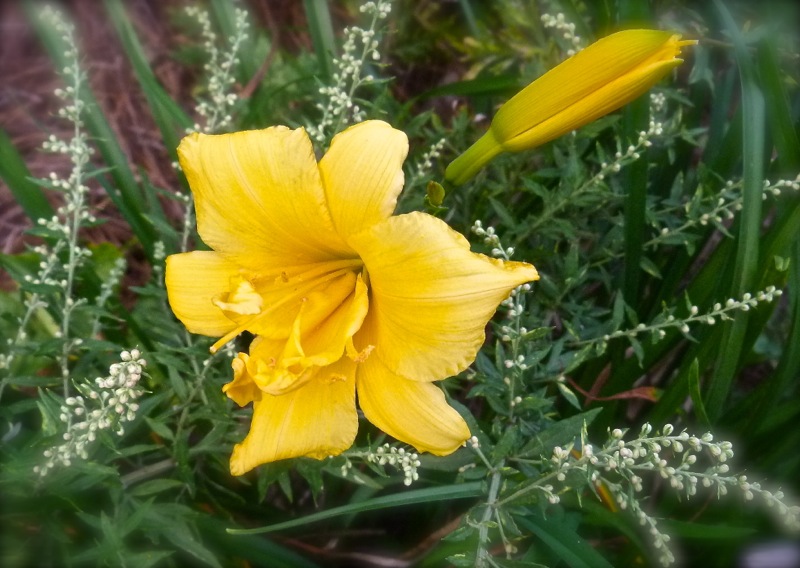This Plant Had to Go
 Saturday, July 19, 2014 at 4:00PM
Saturday, July 19, 2014 at 4:00PM I was forewarned. When I was eyeing the wondrously variegated Artemesia 'Oriental Limelight', the nursery worker told me it could be invasive. The look on her face said more than her words. But it was so pretty! I noted the warning, however, and decided to plant my new specimen in the ground within a plastic pot. That was two years ago.
I noted the warning, however, and decided to plant my new specimen in the ground within a plastic pot. That was two years ago.
Last year I found new sprouts coming up out of the ground, all within a couple feet of the mother plant. I pulled them up but hesitated to remove the original plant. It was so pretty! I even let it flower, because I thought the white buds looked great along with the neighboring yellow day lilies. I was diligent to cut the seed heads off before they dried. Like someone nursing a pet sin, I felt I had it under control.
I was diligent to cut the seed heads off before they dried. Like someone nursing a pet sin, I felt I had it under control.
This year I had to face my problem. This plant was in front of my house, next to where visitors park their cars. I never intended for it to be a ground cover, but not only did I have new plants coming up from underground runners that had escaped the confines of the pot, but now I had seedlings coming up that were five feet or more from the mother plant. So this week I was ruthless, pulling up the original plant, with its tenacious runners snaking out of several holes in the sides of the plastic pot. How was this plant able to make these holes?! I also ripped out every visible seedling. I don't fool myself that I have seen the last of it.
There is a good place for most plants. Perhaps Artemesia 'Oriental Limelight' belongs in a meadow with grasses and other aggressive growers. It does not belong in front of my house.
Sometimes gardeners have to admit their mistakes. A plant may overgrow its spot, or maybe it won't grow at all. Perhaps it demands too much maintenance. Maybe it doesn't look good in its setting, and another plant would be a better choice. Maybe a plant is sickly despite all our doctoring. Gardening is often about editing, and that means we have to be willing to let a plant go.